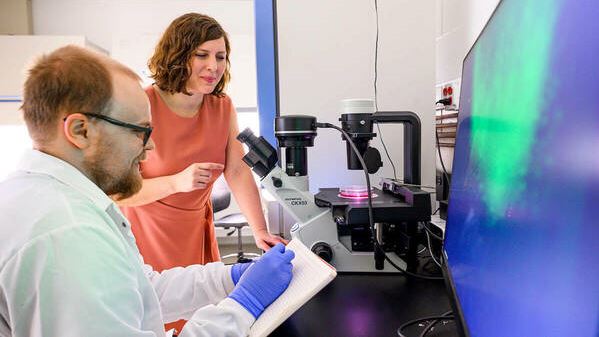Notre Dame Developing Device to Diagnose Heart Attack in Minutes
Subscriber Benefit
As a subscriber you can listen to articles at work, in the car, or while you work out. Subscribe Now
Despite the urgency of treating a heart attack, the process of diagnosing one can seem painstakingly slow. In most cases, when a patient comes to the emergency room with symptoms of a heart attack, doctors will order a troponin test. However, the test measures a marker that can take up to six hours after a heart attack to be detectable in the patient’s blood. Researchers at the University of Notre Dame are aiming for more urgency; the team is developing a handheld device that requires no laboratory and could diagnose a heart attack within 30 minutes.
Notre Dame Sheehan Family Collegiate Professor of Engineering Dr. Pinar Zorlutuna says the standard troponin test used today is “a really delayed diagnosis.” Troponin is the functional protein in heart muscle cells that makes them beat. After a heart attack, the cells start dying, causing troponin to spill out into the blood.
“But it requires cells to die first and disintegrate and leak [troponin] into the blood, so it’s a later event happening compared to the heart attack onset. You need up to six hours for the troponin levels to rise, and then the test itself can take a couple of hours on top of that,” says Zorlutuna. “And [troponin] isn’t a specific marker—it’s more the content of the cells spilled out upon death due to the heart attack. But sometimes heart cells can die for other reasons, and that causes false positive results.”
Other heart conditions or kidney failure could also cause troponin to leak into the blood. Zorlutuna says the device she’s developing in collaboration with Bayer Professor of Chemical and Biomolecular Engineering Dr. Hsueh-Chia Chang is specific to a heart attack and requires no lab analysis. About the size of a small tablet, the device analyzes the sample, which is only a large droplet of blood from the patient—much like a blood glucose monitor.
Rather than detecting spilled contents from a dying cell, the team’s device relies on microRNA, or miRNA.
“MicroRNAs are messenger molecules that cells produce purposefully in response to events that are happening, especially in response to stress events like heart attack,” says Zorlutuna. “Cells produce these while they’re still alive, not after they die, and they produce it specific to the condition that they’re under.”
miRNAs have been proposed to be used as diagnostic markers, but Zorlutuna says their adoption has been limited in emergency settings; the current “gold standard” of measuring miRNA in blood is through a PCR test, “and we all know how long that takes.” Even in the ER, a PCR test requires several hours.
The team’s device uses a new method to measure miRNA, which involves a molecule that binds to targets, triggering a “voltage shift” that the sensor detects. As a result, Zorlutuna says the device can deliver a more accurate heart attack diagnosis within 30 minutes.
The device costs about $50 to build and, powered by a 9-volt battery, could also be used in developing countries.
“With Covid and potential sequels of the heart that come with it…[heart attacks] will become more and more prominent,” says Zorlutuna. “The tool we’re developing right now is for the ER setting, but could potentially be used in a home setting. We’re working toward a heart attack diagnostic that anyone can simply use—like a drop of blood for a glucose test for diabetes. We’re not there yet, but that’s the overall goal.”
The team has filed a patent application and is working with Notre Dame’s IDEA Center to consider launching a startup to commercialize the device. Industry journal Lab on a Chip recently published a study about the device.
Zorlutuna says the team will pursue regulatory approval and test more patients with the device. She believes “diagnosis is the first line of defense” and that the device could be a powerful, faster and more accurate tool in doctors’ hands.
Zorlutuna says better diagnostics could help battle cardiovascular disease, which is the leading cause of death in the U.S.
Zorlutuna says it’s exciting to translate a laboratory discovery into a meaningful point of care tool.
